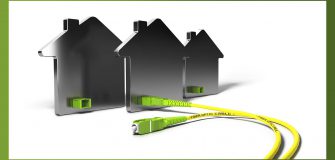GUEST BLOG: Why Quality Network Design and Equipment Should Go Hand in Hand
Share

At Axell Wireless, we work with customers all over the world, in such a huge variety of different environments and scenarios. But there is one thing that unites all of our projects: the importance of good wireless network design. After all, what is the point in deploying equipment that is world-leading, if the network design doesn’t stack up?
This is a message that we try and convey to all the customers we work with. We don’t always get to work on the design ourselves as this is often done through other third parties involved in the project such as systems integrators or network design specialists, but the message is still the same. You should get sound design advice and support before deploying any kind of network.
But what is it about design that is so important?
There are many factors: future-proofing, reliability, capacity, coverage, costs…the list is endless. And when you are talking about complex installations, like the ones we specialize in, such as stadiums or metro systems for example, then design is even more paramount. At the London 2012 Olympics for example, we deployed 46 remote units within the main stadium alone, to cater for the 80,000 spectators that would be there wanting to share the action with their friends and family via Facebook and Twitter.
We come up against many challenges when we deploy networks in these kinds of places. For example, what might seem like the simplest of buildings from the outside, can often incorporate building materials that reflect RF signals, meaning the design of a system that brings coverage indoors is of paramount importance to the building’s occupants. We’ve all been there, waving our phones by the window because our text message won’t send!
How do we overcome architectural challenges and ensure an optimal indoor network?
In instances like this it is vital to design the in-building network accurately; using real floor plans of the building or environment you’re working on. The design should take into account building materials, number of floors, coverage required per antenna, the occupants’ capacity requirements…and many other factors. A good design should allow for accurate uplink and downlink calculations and some form of network validation simulation to illustrate how the network will work once it is installed. And of course keeping it within budget is vitally important, so generating a BOM (bill of material) once the design has been finalised is a good way to manage this.
At Axell we often work with iBwave’s solutions when we are considering a project, to help us with all the factors mentioned above. And they provide live and pre-recorded web demos to showcase the product suite’s capabilities and interoperability between each product.
So you see, with in-building wireless coverage, like many things in life, it is all in the preparation. Good design is just as vital to a successful in-building deployment as the equipment you use, and you should never have one without the other.
- GUEST BLOG: Why Quality Network Design and Equipment Should Go Hand in Hand - October 21, 2013

























